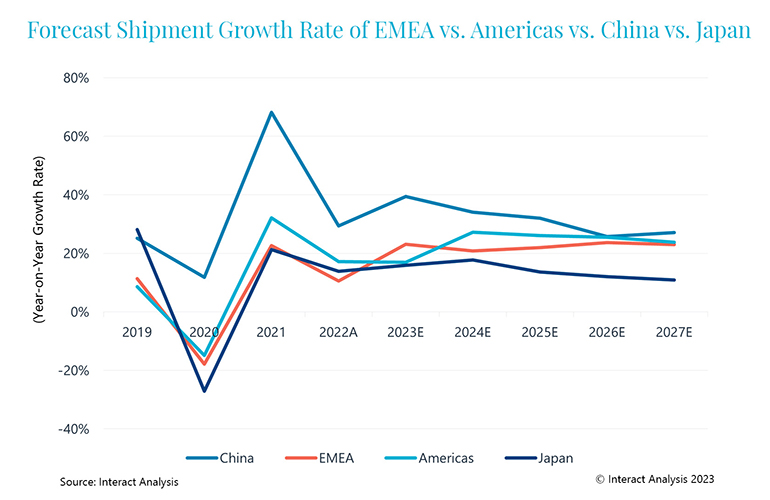
Interact Analysis expects collaborative robot (cobot) market penetration to surpass 20% by 2032, despite the market slowing down in 2022 and 2023 so far.
The research firm expects the cobot market to see modest growth through 2032, with annual growth rates sitting around 20%. The market’s ability to scale up production and develop new applications will be key to its growth, as collaboration between robots and humans is now widely accepted.
Maya Xiao, Research Manager at Interact Analysis, said, “It’s promising to see that the application field for collaborative robots is widening. Maintaining this will be a key factor in the future growth of the market. Deployment of cobots in the education, medical, logistics, catering and retail sectors is increasing due to the development of machine vision and machine learning software.”
“The logistics industry also offers enormous opportunity for the collaborative robot market due to the ability of robots to replace manual labor in areas such as picking, packing, loading/unloading and quality inspection. Watch this space, the market is set to enjoy steady growth over the next ten years.”
Growth in the cobot market has been slow in 2022 and 2023 so far due to inflation and ongoing supply chain disruptions. Interact Analysis expects the Europe, Middle Eastern and African (EMEA) market to recover faster than the American market, despite shipments of cobots in EMEA decreasing from 19.5% to 15.9% by 2027.
Interact Analysis expects the EMEA market to begin recovering in the second half of 2023 and the first half of 2024, while the US cobot industry is expected to be affected by a US manufacturing downturn in 2024.
The EMEA cobot market is expected to have a CAGR of 22.4%, the Americas region will see a CAGR of 25.8% and the Asia-Pacific region (APAC) will see the biggest growth in the coming years with a CAGR of 28.2%.
Universal Robots maintains the biggest share of the cobot market, with AUBO, TechMan and JAKA following behind the company. Most of the cobot vendors are based in the APAC region, with Chinese vendors working to increase their share in the local market.
South Korean manufacturers have also started emerging in the cobot market since 2020. Their success, however, has been mostly tied to the local market because market entry is more difficult for overseas manufacturers.


Leave a Reply
You must be logged in to post a comment.